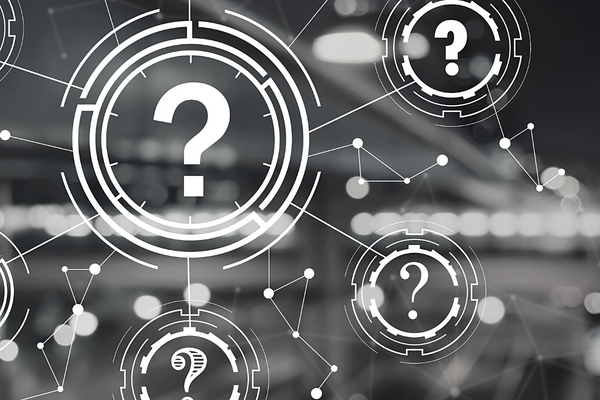A fundamental element required for digital growth success is developing and using consumer personas.
Now before launching into the reasons as to why you should (re)consider creating personas for your bank or credit union, let me quickly outline the academic version of the term.
We define a consumer persona as:
"A semi-fictional representation of your ideal account holder based on market research and real data about your existing account holders and community."
Practically speaking, consumer personas can give your financial institution focus and direction for not just the marketing department, but the organization as a whole.
We'll get to that in a moment.
But first, let's address a major problem with consumer personas within the financial services industry.
The State of Consumer Personas
In our 2017 State of Digital Growth Report, just 32% of banks and credit unions reported they had documented consumer personas for key markets.
I believe this number is inflated.
The data used to compile the State of Digital Growth Report is self-reported, which inherently lends itself to self-reporting biases.
We are certainly aware of this tendency.
And because of this, we've built in different mechanisms within the survey to verify what respondents are reporting is indeed accurate.
That said, our data with our current and past clients reflects this issue of banks and credit unions not having developed consumer personas.
The majority of these clients, whether they engage with us in the Digital Growth Training Program or through a Digital Growth Blueprint engagement, do not have defined consumer personas.
And out of those clients who do report having developed consumer personas in the initial surveys of their respective engagements, we have found just two financial institutions had legitimate consumer personas.
Even so, those two organizations weren't even using them at the time of their engagement with us!
Instead, these consumer personas, which were conceived as part of a previous marketing initiative, were merely residing on some shared filed server covered in digital cobwebs.
The Importance of Consumer Personas
James Robert Lay, Digital Growth Institute's Founder & CEO, spoke at The Financial Brand Forum about how banks and credit unions can develop a digital growth strategy.
The following video is an excerpt from his presentation in which James Robert outlines the primary reasons why banks and credit unions should invest the time to develop consumer personas.
-
Speed1x
-
Quality360p

Thanks for reporting a problem. We'll attach technical data about this session to help us figure out the issue. Which of these best describes the problem?
Any other details or context?
James Robert Lay: "What is a persona? Well, the problem is we find banks and credit unions love to market to everyone who is 18 to 65, has a heartbeat, has money in their pocket, and needs a loan or checking account. The problem here is when we do this, we're really marketing to no one because it's hard to just say, 'We're going to target everyone.'
That's the beauty of digital, and that's the beauty of personas because we can create messages, we can create imagery, content, copy, that speak to the hearts and minds of specific consumers.
The solution to this problem is this: consumer personas. They're nothing more than a semi-fictional representation of your ideal account holder. This is based on market research and real data, about who you're looking to attract and grow from.
Consumer personas are more than demographics. They go beyond age, income, sex, what's their account balance. What products do they have? We begin to humanize this number with an actual person. What are their questions? What are their concerns? What are their hopes? And what are their dreams?
Very simplified, questions, concerns, hopes, dreams.
Consider this. The traditional and legacy marketing approach of how we target customers, how we target members and prospects. On the left, it's just demographics. We don't know who this person is, and this is more critical now with digital than ever before because a lot of times, we may not ever see who this person is walking into one of our branches.
On the right, we have a consumer persona. We have Jennifer. She's a working mother, she has a loving family, she's anxious about the future. She's trying to find balance in her life. It's much easier to create materials, marketing materials, marketing campaigns, marketing collateral that resonate with Jennifer, if we know who Jennifer is."
Finding Focus with Personas
As James Robert discussed, banks and credit unions must move past the mentality of trying to market to everyone between 18 and 65 years old in their communities.
This can be an unpopular opinion, especially for those organizations whose operations are built around legacy marketing thinking and systems.
"We'll be turning opportunity away," financial executives say when proposing the need to develop consumer personas.
I simply respond, "You're not turning away anyone. You won't have an employee standing at the doors of your branch denying entry to anyone. Same with your website. Or your call center. But your marketing and as a byproduct, your organization, will just have focus and direction moving forward."
I understand this exercise is easier said than done.
A few weeks ago, after delivering our findings and recommendations to one of our clients, I was participating in a post-engagement phone call providing general remote guidance.
The topic of conversation: consumer personas.
Using our consumer persona worksheet, the client recently completed three rough outlines for the personas they were looking to build over the coming weeks and asked for our input.
After taking just a few minutes to review the three drafts, I explained the challenge the client would be facing moving forward.
"Some of what you have is good, but there's a foundational issue that will jepoardize any true progess. It stems from the age range you've built these personas around."
I continued, "You have developed personas for individuals between 25-45 and 50-65 years old. Even though you've been able to identify some similarities between a 25 and 45-year old, their questions, concerns, hopes, and dreams are going to be vastly different. Same with the 50 to 65-year old persona."
The recommendation I made was to have them continue researching and identify where the opportunity for growth was in their community around a specific age demographic.
This exchange is not unusual in the early stages of a client's consumer persona development process. In fact, we recommend allocating several weeks to a few months to properly research, survey, revise and finalize these personas.
When executed appropriately, the end result of developing consumer personas provides banks and credit unions with focus and direction for their digital marketing initiatives moving forward.
This article was originally published on December 14, 2017. All content © 2024 by Digital Growth Institute and may not be reproduced by any means without permission.





